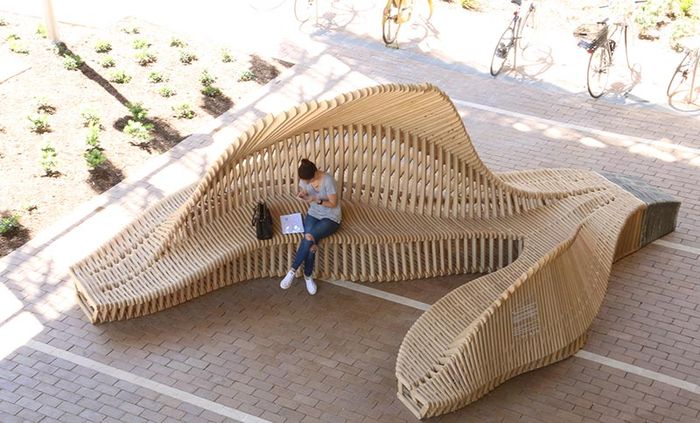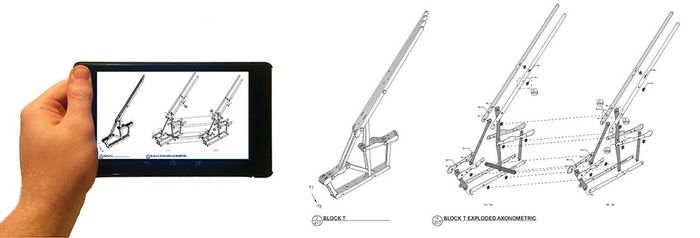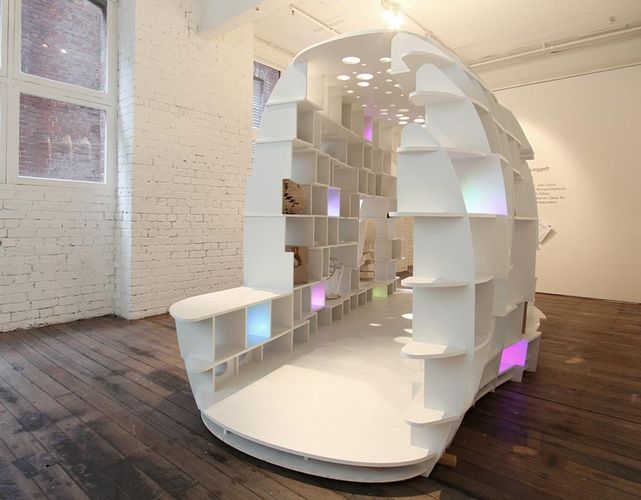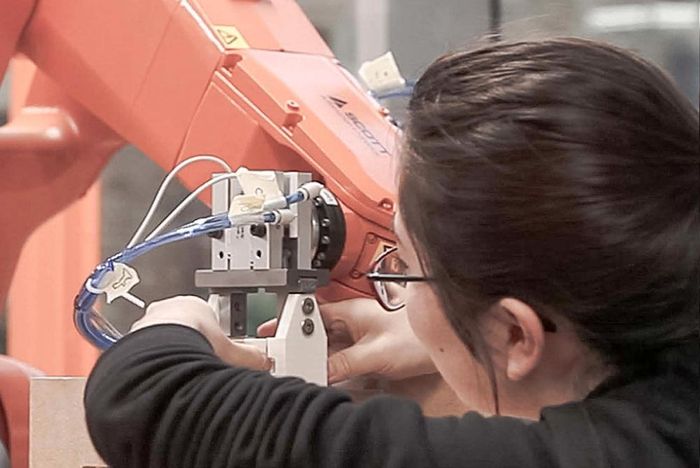Designing Through Making: Machining Our Future
Machining Aesthetics is one of the studio subjects taught in the Master of Architecture and is one of many hands-on making experiences our students use to explore their creativity at the Melbourne School of Design. Our students produce stunning digital designs, making them using our state-of-the-art Fabrication Workshop. They also get to learn how to use robots...!

We talked to studio leader Paul Loh and student Xuyou Yang to understand how Machining Aesthetics is reimagining design teaching and learning.
Xuyou Yang: Machining Aesthetics is a very demanding studio across architectural design, digital modelling, fabrication and representation techniques. Machining Aesthetics V4.0 offered us the opportunity to work with the Faculty’s new robotic arms, a rare opportunity in a studio environment.

Paul Loh: The inspiration for the studio came from my architectural practice, Power to Make / LLDS. We are one of the few architectural offices in Melbourne that has its own making workshop equipped with Computer Numerically Controlled (CNC) machines. More recently, we started to make our own CNC devices to advance our digital manufacturing techniques and evolve our design repertoire. This design research methodology carried into our studio teaching, in both the Bachelor of Design and the Master of Architecture.
Xuyou Yang: At the start of the studio, we were given a digital skills workshop which allowed us to engage with robotics very quickly. Machining Aesthetics creates an extremely fast-paced study environment. During the making process, we were pushed to design, fabricate and test a new iteration of formwork almost every week. The experimentation was part of the learning process, especially when we were exposed to new technical content. We endured many failures while exploring the variable formwork and robotics programming. Failures are part of our learning experience, and led, in the end, to successfully working prototypes.

Paul Loh: We want our students to literally craft and machine their aesthetics. This is not some abstract appreciation of materials; it can be quite literal, like markings on a piece of timber or a visual distortion when one vacuum-forms a sheet of plastic. When students let go of their pre-conceived formal expression, they start to appreciate the material and its manufacturing process.
Xuyou Yang: At an early stage of the design, my project partner and I consulted with Arup engineers about the structural potential of the system. Later, with the combined support of the studio leaders and the Robotics Lab staff, we came up with a robotic variable fabric formwork to cast hyperbolic paraboloid panels using plaster, which is a less complex and wasteful procedure than conventional methods of casting doubly curved geometry in construction.

Paul Loh: The way we make things changes the way we design and build. A major part of the studio teaching is around knowledge that can only be gained through making or doing something.
Xuyou Yang: Machining Aesthetics is the toughest studio I have ever undertaken, but it has also greatly advanced my architectural thinking. I learned advanced digital fabrication techniques, how to design digital workflows (especially robotic fabrication) and automation in construction.

Xuyou Yang: Several months after studying the subject I presented a paper at the Conference on Computer-Aided Architecture Design Research in Asia (CAADRIA). I was supported by the Michael Kaufman Scholarship Fund to present the paper at the Conference to an international audience in Suzhou, China, where I was awarded the Young CAADRIA Award. I’m now employed, as a robotics technician in the MSD Robotics Lab.
Machining Aesthetics Studio is led by Paul Loh, Lecturer in Digital Architecture and David Leggett of Power To Make/LLDS.
Study with us
Our Bachelor of Design + Master of Architecture course combination is accredited by the Australian Institute of Architects, the Architects Registration Board of Victoria and the Commonwealth Association of Architects.
Apply for the Bachelor of Design
Apply for the Master of Architecture